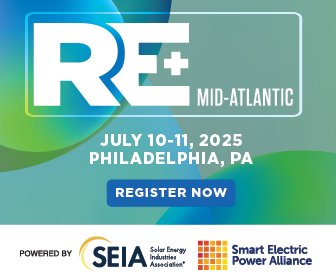Bringing Down Solar Hard Costs with 3D Printing
 Solar energy has certainly hit the mainstream market. It is no longer a pipe dream but rather a big player that is becoming a true contender for market domination. For many, a drive to work in the morning means spotting a least a solar panel array or two along the route. But now that solar energy has proven itself in the market, how does growth continue?
Solar energy has certainly hit the mainstream market. It is no longer a pipe dream but rather a big player that is becoming a true contender for market domination. For many, a drive to work in the morning means spotting a least a solar panel array or two along the route. But now that solar energy has proven itself in the market, how does growth continue?
In order to further achieve mainstream adoption of solar energy, costs still need to come down. The cost of solar energy has already decreased so much (today's solar panels cost about 100 times less than their 1977 counterparts) that the opportunities for further hard cost reductions are becoming scarce and harder to achieve - for example, lowering cell production costs or less expensive hardware when installing the panels. The conversations these days have centered around soft costs such as customer acquisition, permitting, and labor. However, new innovations prove there is further room for the reduction of these hard costs.
Solar panels are made up of many solar cells, which are usually made of silicon, the most expensive part of the cell. Serving as the semiconductor, silicon is responsible for up to 75 percent of the overall cost of a cell. Improvements in technology for silicon cell production could further drive down solar hardware costs.
When manufacturing solar cells, solar cell metallization plays a major role in the cost of manufacturing. Metallization is the use of conductive inks to print grids on the surfaces of solar cells which draw the current off to an external electrical circuit. Today, the most popular form of printing for solar cells is traditional screen printing technologies in which the screen comes in contact with the cell in order to print. This screen print metallization often results in a high level of breakage (up to 5 percent), a waste of valuable silicon due to the mechanical forces involved in screen printing. Since breakage is already all too common with the current thickness of the wafers, any reductions to their thickness simply is not feasible. However, a transition from traditional screen printing to non-contact digital conductive ink printing could change all of this. Digital printing technologies never come in contact with the cell, and therefore, significantly decrease breakage. Such an advancement enables a reduction to the wafer thickness, saving valuable silicon, and reducing costs.
 The use of conductive inks in digital inkjet printing also saves money by increasing efficiency. With increased solar cell efficiency, fewer cells are needed to harvest the same amount of energy, allowing less product to be used to achieve the same results. The digital printing technology enabled by single-crystal nanometric conductive inks allows for narrower conductive patterns - covering less of the cell's surface with ink - which not only utilizes less of the costly silver for the ink but it also allows for better sunlight penetration.
The use of conductive inks in digital inkjet printing also saves money by increasing efficiency. With increased solar cell efficiency, fewer cells are needed to harvest the same amount of energy, allowing less product to be used to achieve the same results. The digital printing technology enabled by single-crystal nanometric conductive inks allows for narrower conductive patterns - covering less of the cell's surface with ink - which not only utilizes less of the costly silver for the ink but it also allows for better sunlight penetration.
Until now, inkjet printing technologies had not been able to achieve widespread adoption due to the lack of conductive inks properly suited for the task. Single-crystal nanometric conductive inks are designed to cut solar cell energy costs by 10 to 20 percent. These inks include copper nanometric conductive ink, which delivers the outstanding properties of silver ink with even greater cost efficiency because of the lower cost of copper.
Despite making up only 0.4 percent of the nation's energy supply in 2014, the solar market is growing rapidly. If solar energy becomes cost-competitive with electricity provided from the grid, it stands to make up a significant part of the nation's energy supply. Reducing soft costs is a reliable route to bringing down the cost of solar, but we cannot discount the ability to continue cost reductions in process and materials.
The implementation of innovative technologies can spark cost reductions and increased efficiencies. A combination of both soft and hard cost reductions are required to bring costs down enough to allow solar energy to be a feasible source of energy for anyone in any economic status.
 Fernando de la Vega is CEO and founder of PV Nano Cell, producer of Sicrys single-crystal nanometric conductive digital inks. He holds a PhD in applied chemistry and has a strong technical and management background with more than 20 years experience in the industry.
Fernando de la Vega is CEO and founder of PV Nano Cell, producer of Sicrys single-crystal nanometric conductive digital inks. He holds a PhD in applied chemistry and has a strong technical and management background with more than 20 years experience in the industry.
PV Nano Cell | www.pvnanocell.com
Volume: 2016 July/August












